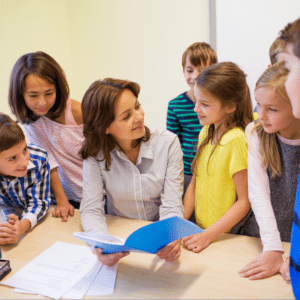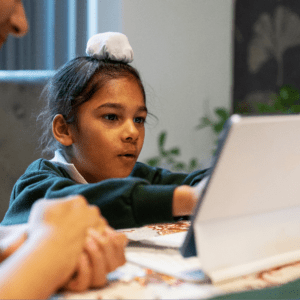Summary:
- What does this standard mean?
- What does meeting this standard look like?
- What evidence can I collect to show that I’m meeting this standard?
The second of the Australian Professional Standards for Teachers is to know the content and how to teach it. This standard is a part of the Professional Knowledge domain and covers most of what you actually teach in the classroom, from the curriculum content to core skills and perspectives.
See more: Australian Professional Standards for Teachers Terminology Explained

What does this standard mean?
Teachers need to have a firm grasp on what they are actually teaching their students before they can begin planning and actually teaching. There are six separate descriptors for this standard:
- Content and teaching strategies of the teaching area.
- Content selection and organisation.
- Curriculum, assessment and reporting.
- Understand and respect Aboriginal and Torres Strait Islander people to promote reconciliation between Indigenous and non-Indigenous Australians.
- Literacy and numeracy strategies.
- Information and Communication Technology (ICT).
These descriptors cover the breadth of different content and skills that all teachers are expected to be familiar with and teach in their classrooms. From these descriptors, it’s clear that teachers in Australia are not just expected to be confident in their specific subject, but also in a range of other concepts and skills.
What does meeting this standard look like?
At Graduate level, this standard expects that teachers will know how to do the things outlined in each descriptor. A Graduate teacher is expected to be familiar with their curriculum content as well as how the curricula are structured, as well as literacy and numeracy skills appropriate for their students’ abilities. They should also have a firm enough grasp of Aboriginal cultures and perspectives to be able to incorporate them into their learning programs.
At the higher levels of this standard, teachers need to demonstrate that they can effectively plan and implement learning programs that teach students their subject content as well as these broader skills and perspectives. Highly Accomplished and Lead Teachers will be expected to support their colleagues in building their capacity and implementing strategies to teach these things outlined in the descriptors to their students.
What evidence can I collect to show that I’m meeting this standard?
There is a range of different pieces of evidence that you can gather for this standard:
- Assessment tasks that you have designed that meet the assessment criteria for your subject area.
- Course outlines and unit plans that show that you can sequence content in a meaningful way.
- Inclusion of Aboriginal and Torres Strait Islander perspectives in your lesson resources or plans.
- Assessment tasks or resources that make use of different technologies or online platforms.
- Plans, tasks or scaffolds that explicitly teach literacy and numeracy in the context of your subject.
Learn more about the other Australian Professional Standards for Teachers:
- Know students and how they learn.
- Know the content and how to teach it.
- Plan for and implement effective teaching and learning.
- Create and maintain supportive and safe learning environments.
- Assess, provide feedback and report on student learning.
- Engage in professional learning.
- Engage professionally with colleagues, parents/carers and the community.


